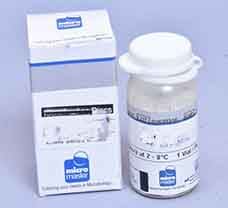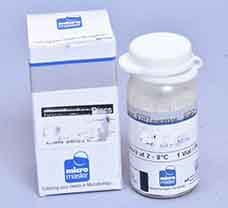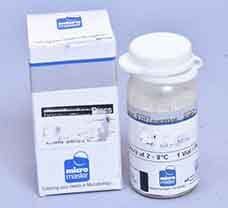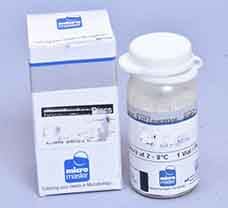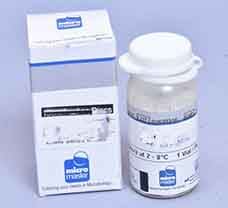
R-2A Agar Plate-MP962-50PT
- Brand: HIMEDIA
- Catalog No.: MP962-50PT
- Quantity/Unit: 50plts/Pack
- Usually Shipped in: 2-3 Weeks
Min Orderable Qty : 1 Pack
For lab/research use only, unless otherwise specified
R-2A Agar Plate is supplied by HiMedia. It contains 25ml of sterile ready prepared media in 90 mm plates. This light yellow coloured medium has a pH in the range of 7.0 to 7.4. R-2A Agar is generally used for the heterotrophic plate count of treated potable water, with longer incubation period. It is advisable to store this product between 15-25C. Composition (in gm/L) is as follows:
Casein acid hydrolysate (0.50)
Yeast extract (0.50)
Proteose peptone (0.50)
Dextrose (0.50)
Starch, soluble (0.50)
Dipotassium phosphate (0.30)
Magnesium sulphate (0.02)
Sodium pyruvate (0.30)
Agar (15.00)
The heterotrophic plate count (HPC), formerly known as the standard plate count is a procedure used for estimating the number of live heterotrophic bacteria in water and to measure changes during water treatment, in distribution systems or in swimming pools. R-2A Agar is recommended by APHA for estimating the heterotrophic plate count by the pour plate, spread plate or membrane filter procedure. This media is formulated as per Reasoner and Geldreich. Organisms that are stressed or injured during water treatment are unable to grow on high nutrient media, since the faster growing organisms outgrow the former. Hence the use of a low nutrient medium like R-2A Agar incubated for longer periods, allows these stressed organisms to grow well. Many bacteria which contain limited nutrients at ambient temperature, grow best on the media with less nutrient levels. They grow better at the temperatures below the routine laboratory incubation temperatures of 35 to 37C. Casein acid hydrolysate, proteose peptone and yeast extract present in the medium provide nitrogen, vitamins, amino acids, carbon and minerals. Dextrose serves as an energy source. Soluble starch aids in the recovery of injured organisms by absorbing toxic metabolic by-products while sodium pyruvate increases the recovery of stressed cells. Magnesium sulphate is a source of divalent cations and sulphate. Dipotassium phosphate is used to balance the pH of the medium. The number of colonies on a plate are reported as CFU (Colony Forming Units) per volume of sample.






